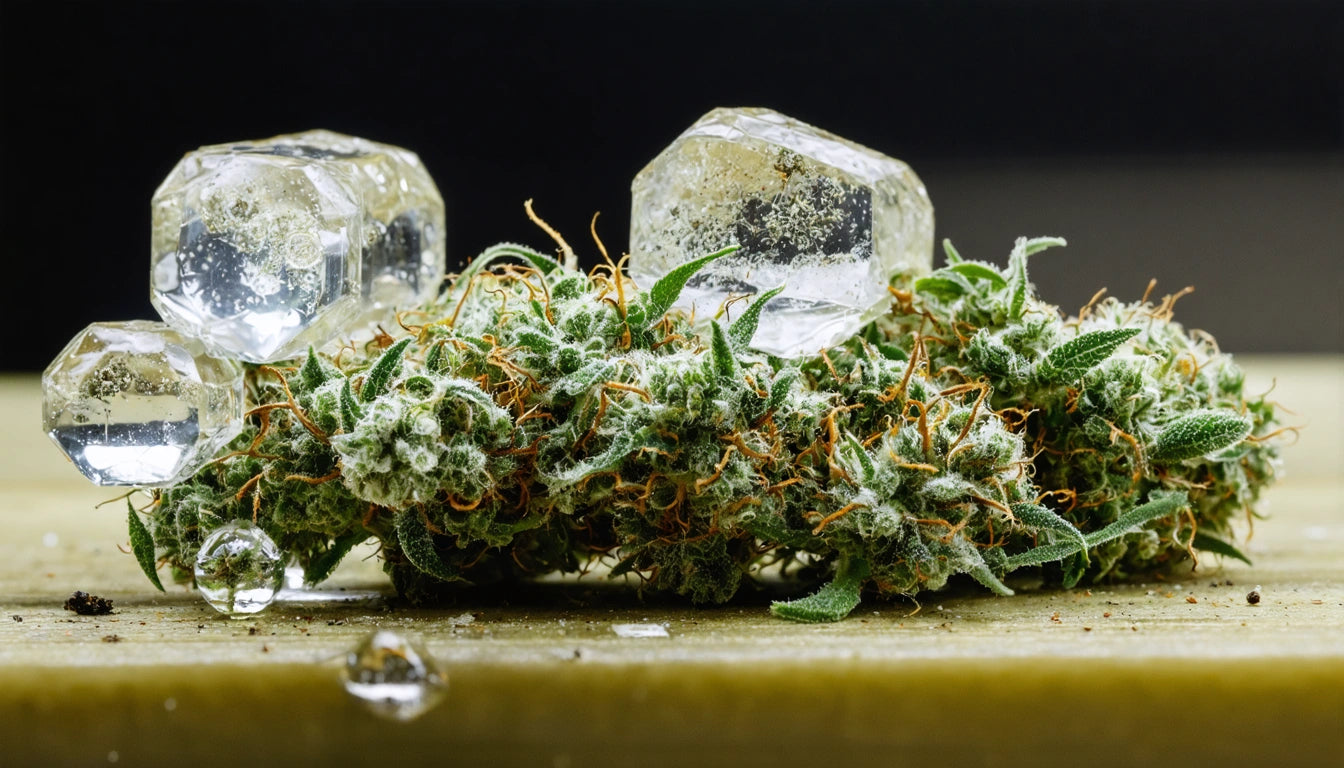Table of Contents
Guide to Defoliating Cannabis: Timing and Techniques
Defoliation is a high-stress training technique that involves the strategic removal of leaves from cannabis plants to improve light penetration, air circulation, and ultimately boost yields. When done correctly, defoliation can transform an average harvest into an exceptional one. This guide covers when and how to defoliate cannabis plants throughout their lifecycle.
Understanding Cannabis Defoliation: Benefits and Purposes
Defoliation works by removing select fan leaves that block light from reaching lower bud sites. This practice offers several key benefits:
- Improved light penetration to lower branches and bud sites
- Better air circulation, reducing humidity and preventing mold
- Redirection of plant energy to bud production rather than foliage maintenance
- Potential increase in overall yield and cannabinoid production
While it may seem counterintuitive to remove the plant's solar panels, strategic defoliation forces the plant to focus resources on flower development rather than maintaining excessive foliage.
When to Defoliate Cannabis: Optimal Timing
Timing is critical when defoliating cannabis. The plant's growth stage largely determines when and how aggressively you should defoliate.
Vegetative Stage Defoliation
During the vegetative stage, plants are building structure and developing the foundation for flowering. Defoliation during this phase should be moderate and strategic:
- Begin light defoliation when plants have 4-5 nodes (typically 3-4 weeks into vegetation)
- Focus on removing only large fan leaves that shade potential bud sites
- Allow 5-7 days of recovery between defoliation sessions
- Perform a more substantial defoliation 1-2 days before transitioning to the flowering stage
Flowering Stage Defoliation
Many growers wonder, can you defoliate during flowering stage? The answer is yes, but with careful timing and moderation. According to flowering timeline research, there are two optimal windows for flowering-stage defoliation:
- Day 1 of flower: Remove larger fan leaves that block light to developing bud sites
- Day 21 of flower (end of stretch): This is the last major defoliation, often called "lollipopping"
After day 21, only remove yellow or dying leaves. Extensive defoliation late in flowering can stress plants and reduce yields rather than enhance them.
Special Considerations for Autoflowers
When considering when to defoliate autoflowers, extra caution is necessary. Autoflowering cannabis has a fixed lifecycle and limited recovery time:
- Begin very light defoliation only after the plant has 5-6 nodes
- Limit to removing only 2-3 leaves per session
- Stop all defoliation once pre-flowering begins
- Focus on lower leaves that receive minimal light
Autoflowers generally require less defoliation than photoperiod plants due to their compressed lifecycle and reduced recovery capabilities.
Defoliation Techniques and Best Practices
Understanding how to defoliate cannabis properly involves more than just timing. The technique itself matters significantly:
- Use clean, sharp scissors or pruning shears to make clean cuts
- Start from the bottom of the plant and work upward
- Remove leaves that are: blocking bud sites, touching soil, yellowing, or growing inward
- Never remove more than 20-30% of foliage at once from photoperiod plants
- For autoflowers, limit defoliation to 10-15% of total foliage
After harvesting, proper storage becomes essential. Many cultivators use specialized storage solutions to preserve the quality and potency of their carefully cultivated buds.
Common Defoliation Mistakes to Avoid
Even experienced growers can make these common defoliation errors:
- Over-defoliation: Removing too many leaves at once stresses plants severely
- Poor timing: Defoliating during early seedling stage or late flowering
- Removing sugar leaves: These small leaves near buds contribute to potency
- Inconsistent technique: Defoliating some plants more aggressively than others
- Ignoring plant signals: Continuing to defoliate when plants show stress
Monitor plants closely after defoliation. If recovery seems slow or plants display stress symptoms, adjust your approach for future sessions.
Post-Defoliation Care for Optimal Recovery
After defoliating your cannabis plants, proper care ensures rapid recovery and continued growth:
- Maintain consistent environmental conditions (temperature, humidity, light)
- Consider slightly reducing nutrient strength for 2-3 days after major defoliation
- Monitor closely for signs of stress or nutrient deficiencies
- Ensure adequate airflow around defoliated plants
- Consider supplementing with silica to strengthen remaining foliage
As noted in timing guides for cannabis cultivation, recovery periods after defoliation are critical transition points that influence final harvest quality.
By understanding when and how to properly defoliate cannabis, growers can significantly improve their yields while maintaining plant health. Remember that each strain and growing environment may require adjustments to these general guidelines. Pay attention to how your specific plants respond, and refine your approach with each growing cycle.











Leave a comment
All comments are moderated before being published.
This site is protected by hCaptcha and the hCaptcha Privacy Policy and Terms of Service apply.